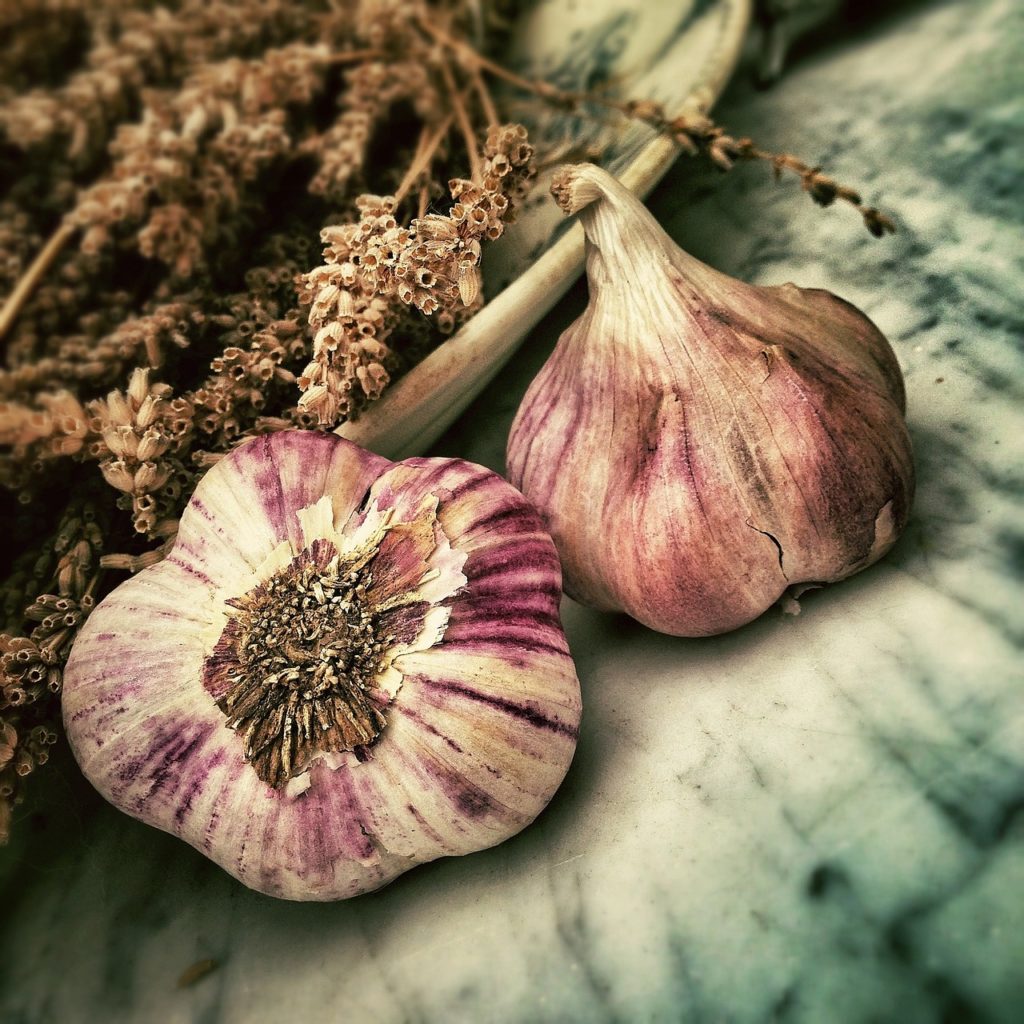
Time to Start Planting Garlic! It’s that time of the year where the trees are putting on their fall colors, pumpkin spice everything is in the air and we start to bring out our fall decor and sweaters. But for us gardeners… It’s time to plant garlic for next year! This time of the year seems to sneak up fast and I never feel ready to hang up my gardening gloves until spring. But it’s exciting to plant that last crop of the season.
Figure out what type of garlic you want to plant- hardneck and/or softneck garlic.
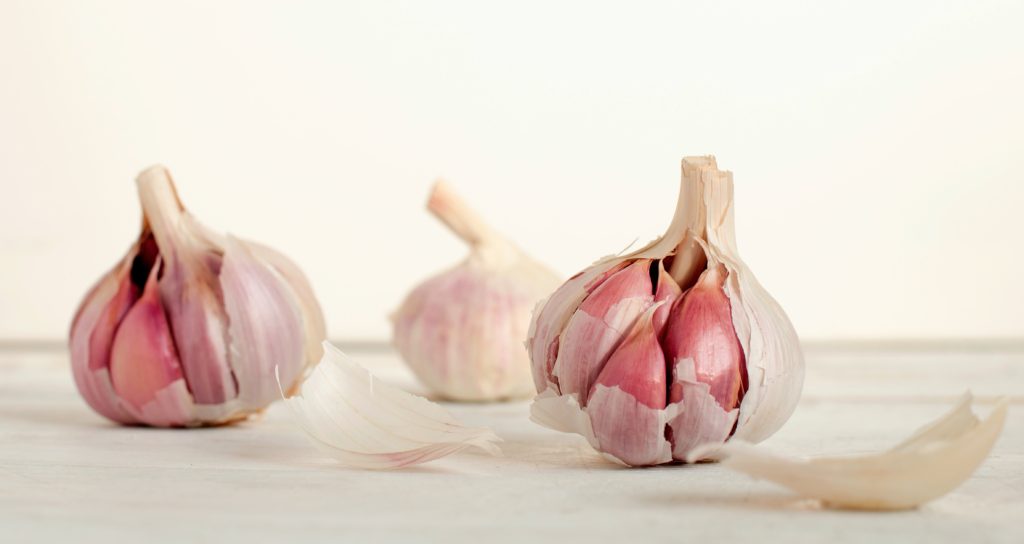
Hardneck garlic has less individual garlic cloves inside, but the cloves they do have are bigger in size. Hardneck garlic is the only one that produces the edible scapes or also known as the flowering stem. The scapes can be used in many dishes to add a mild peppery flavor. From grilling, sautéing, stir-fry, pickling and making pesto. As the bulb is growing underground it is growing a single row of garlic cloves. The hardneck name says it all, the stem/neck that comes up from the center of the garlic is hard as it matures and the cloves are easier to peel. This type is hardier for colder climates and you can store the bulbs from 3-6 months after harvest, which is not as long of a shelf life as the softneck garlic type. But within this type of garlic you can find several dozen varieties to choose from.
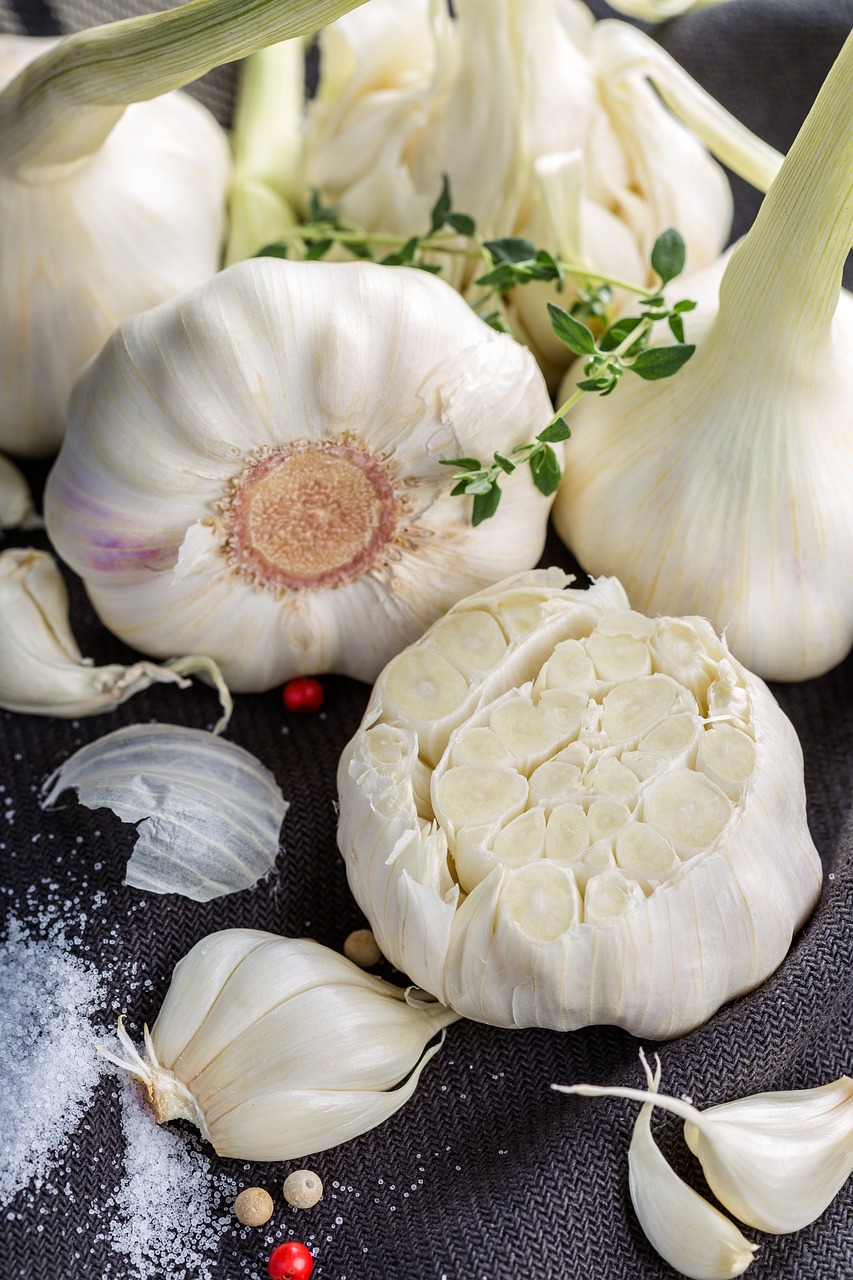
Softneck garlic has more cloves but the cloves are way smaller than the hardneck garlics. This type of garlic is what you would usually find at the grocery store. They have a more mild flavor and works well in any recipe. It does NOT produce edible scapes. Softneck garlic has softer neck and are more leafy in appearance. This type of garlic has thicker papery peel, which makes it a little harder to peel, but makes it have a longer shelf life (6-8 months but some people say 9-12 months) when storing them. There is a few dozen varieties of softneck garlic’s you can plant.
HOW TO PLANT GARLIC?
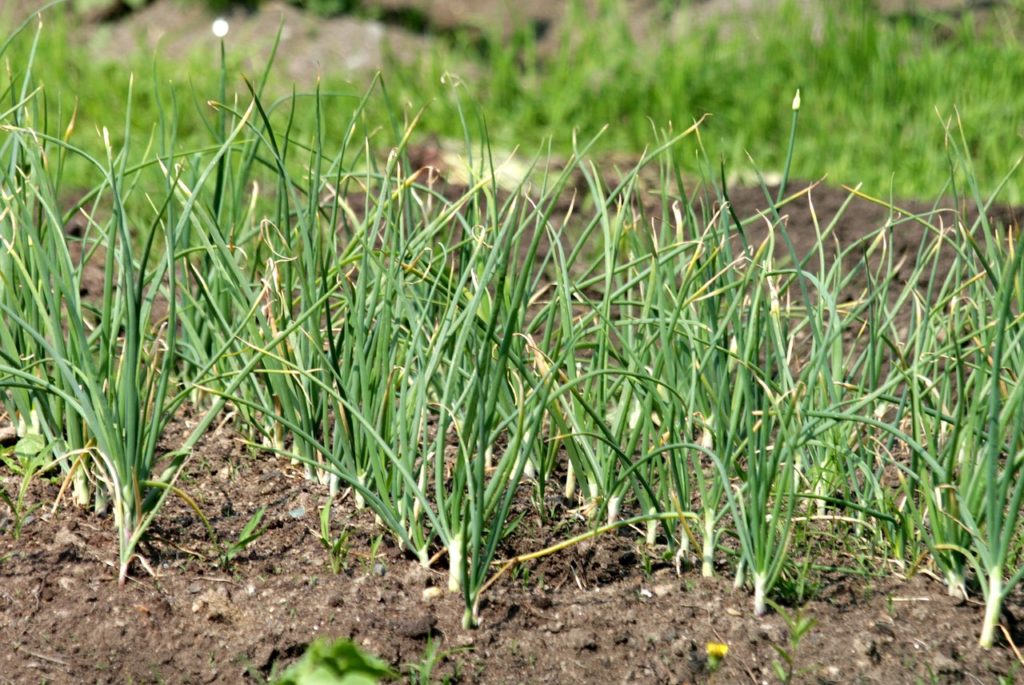
The two types we talked about above are planted the same.
Prepare your soil ahead of time with compost, aged manure or synthetic fertilizers. Garlic has a moderate to high demand for Nitrogen. When you buy a fertilizer the bag should have a N-P-K number on it. Which stands for N- Nitrogen P- Phosphorus K- Potassium. I like to use an all purpose fertilizer in my area which is a 16-16-16. I use this when I make my Mittleider Weekly feed. But do not over fertilize or the garlic plant will put all of its energy into the leaves and not the garlic bulbs. Garlic likes to grow in well draining soil so that the garlic bulb will not rot. You can grow garlic in a raised bed if your native soil holds onto too much moisture.
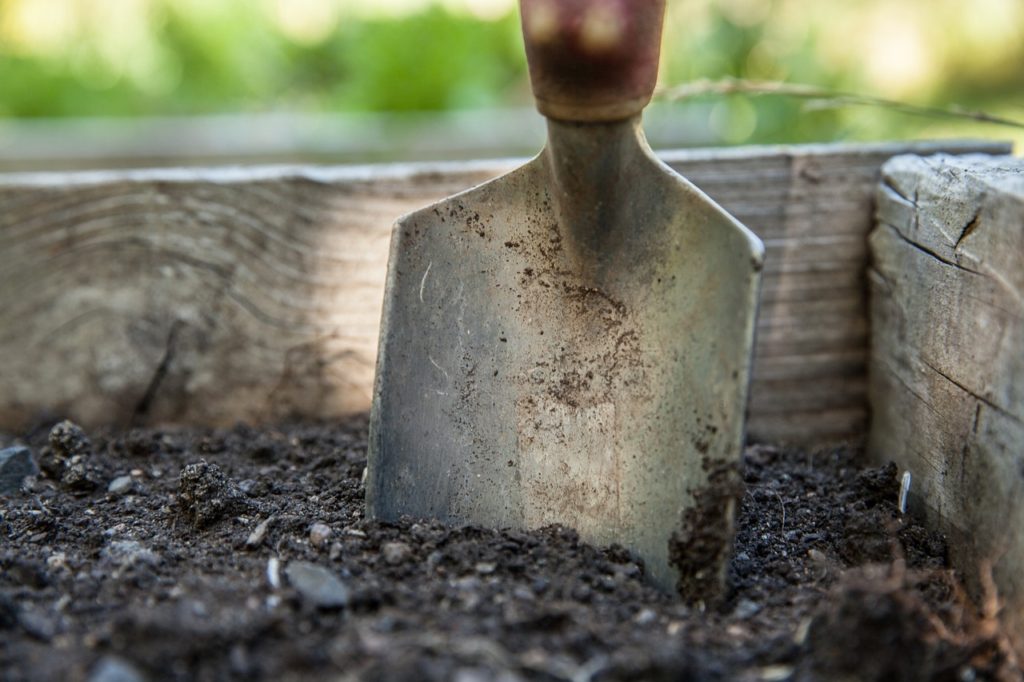
Can I plant garlic cloves from the grocery store? NO! The very first year you want seed garlic bulbs, because usually the ones you buy in the grocery stores are sprayed with a chemical to stop them from spouting (just like potatoes). But the second year, you can save some of the garlic you planted the year before and those will be your new seed garlic bulbs. This will definitely help with the expense.
How to pick the best garlic to plant? You want BIG healthy garlic cloves. Plant big – Harvest big. This rule isn’t true for everything, but for garlic, it is. So when you are pulling apart that garlic bulb to show the cloves, only plant the larger cloves, unless you have ample space to plant it all. You can use the small cloves in a dish. Also, you do not need to take off the papery peel on the cloves.
When to plant? BEFORE the ground freezes. Zones 4-7 Early to Mid October, zones 7-9 Late October to mid November and zone 9-10 late October into December. Zones 9-10 should be planting softneck variety which would need less of a cold period to develop their bulbs. Don’t plant to early or the plant will start growing to soon and send up several inches of leaves that may cause the bulb to rot during the winter months. But if you see a little green pop up, I wouldn’t worry about it. If you are in an extremely cold zone, make sure to mulch it high. Garlic needs 4-8 weeks of freezing temps to go into dormancy to develop the biggest bulbs.
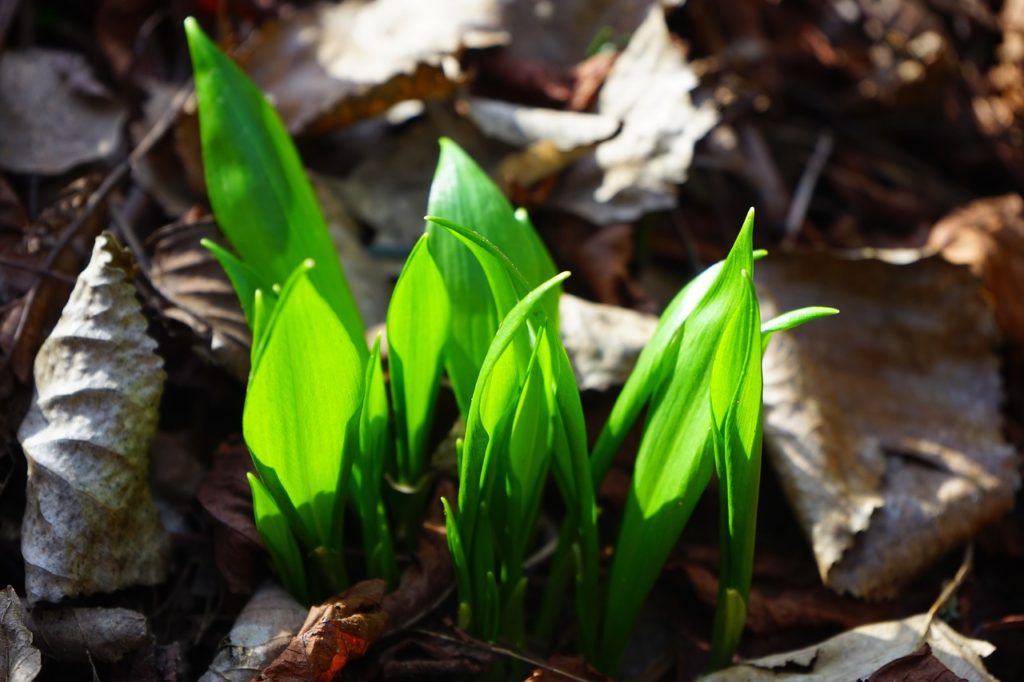
What way do you plant the garlic cloves? Rooted side down. I look at it like a rain drop, you want the fat end to go in the hole first.
How Deep? 2-4 inches This depends on how cold your winters are. For colder climates, you want to plant them deep, like 4 inches. But for more mild climates 2-3 inches will do the job. Make sure to mulch high if you are in an extremely cold climate.
How far to space your garlic? 4-8 inches You do NOT want to plant them to close because they will need to have room to expand. When you plant them to close the bulbs will be smaller. So 6 inches seems to be a happy medium.
Light Requirement– Full sun 6-8 hours at least. Like most vegetables and fruits, they need full sun to be the best they can be. You may have smaller garlic bulbs if you don’t give them full sun.
Now What? You can relax all winter long and wait for your garlic to start to show signs of growth in the Spring. At this time you will need to give them fertilizer high in Nitrogen. Fertilize every 2-3 weeks until you are 2-3 weeks from harvesting. If you are growing hardneck garlic, make sure to cut off those flowering stems or the plant will be putting its energy into making seeds for next year and not the bulb.
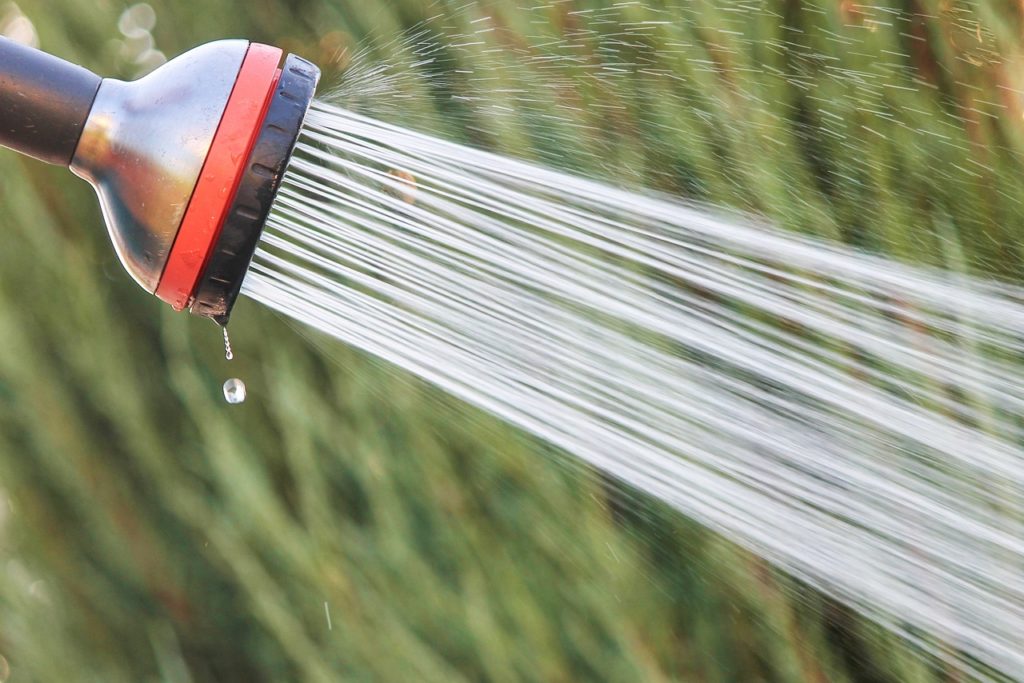
Water- When and How Much? Its best to water in the morning time. This is true for almost all plants. It gives it time for the leaves to dry out and not rot during the night. If you are using drip you don’t have to be as careful. Garlic is a shallow rooted plant, so if the soil around the plant and bulb is dry you need to water it right away. For some people in hotter areas, this can be done 2 times a day. If the leaves are turning yellow, try backing off on watering. Its hard to say how long to water, because everyone uses different watering methods. Drip, hand water, overhead sprinklers and so on. I use 1/4″ drip and the emitters are spaces every 6″ in all my beds and I run them for 15 minutes.
When is it time to Harvest? You will notice the leaves start to die back, use a shovel or gardening fork to loosen up the soil around the bulb, but without damaging it. If you harvest it too soon that papery peel around every clove may not have fully developed yet. But if you wait to long, then that tight garlic bulb will start to separate. Both of these things will hinder the storage life of your garlic. So test out one garlic before you start to pull up your hole garlic patch.
After you are done harvesting– You want to dust off all the soil gently and move them out of the sun to a well air circulated place for the curing process. Do NOT wash your garlic bulbs and leave on the leaves or stalk for best curing practices. You can lay all your garlic on a wire rack or tie them up in bundles and hang them to allow the bulbs to have good air circulation. The drying process will take 3-4 weeks. After the skin and leaves/stalks are dried you can cut 1/2″ above the bulb for storage or leave the bundles hanging. Store in a cool dry place preferably 45-55F degrees. But you can always freeze, can, or dehydrate your garlic after the curing process.
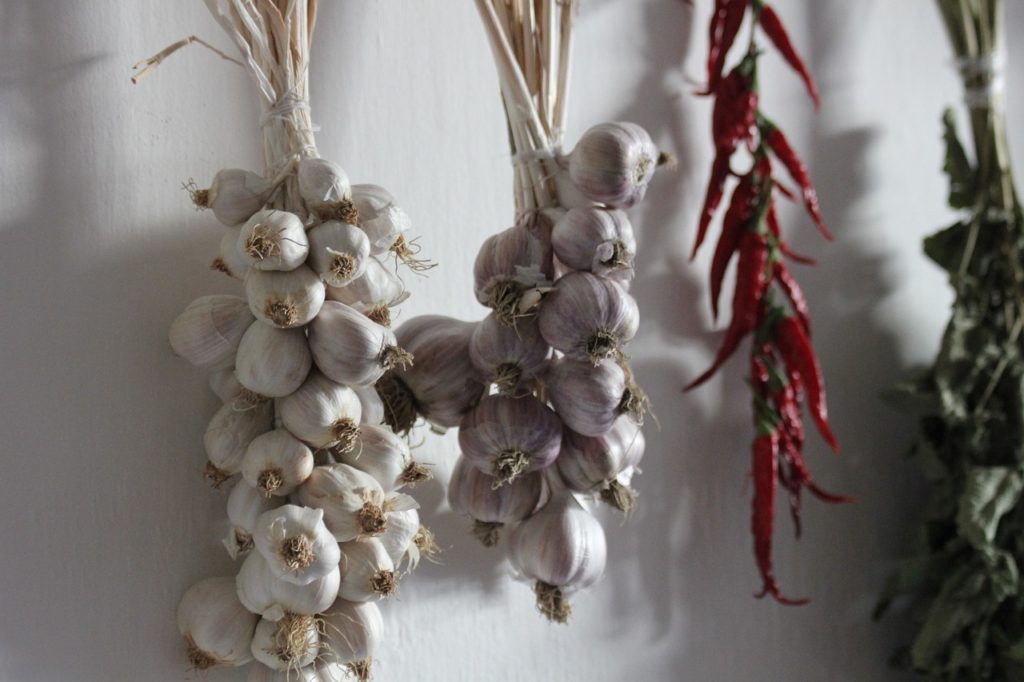
I would love to hear what plans you are making for your garlic patch this year! Leave me a comment below.
Article by: Melissa Ferris
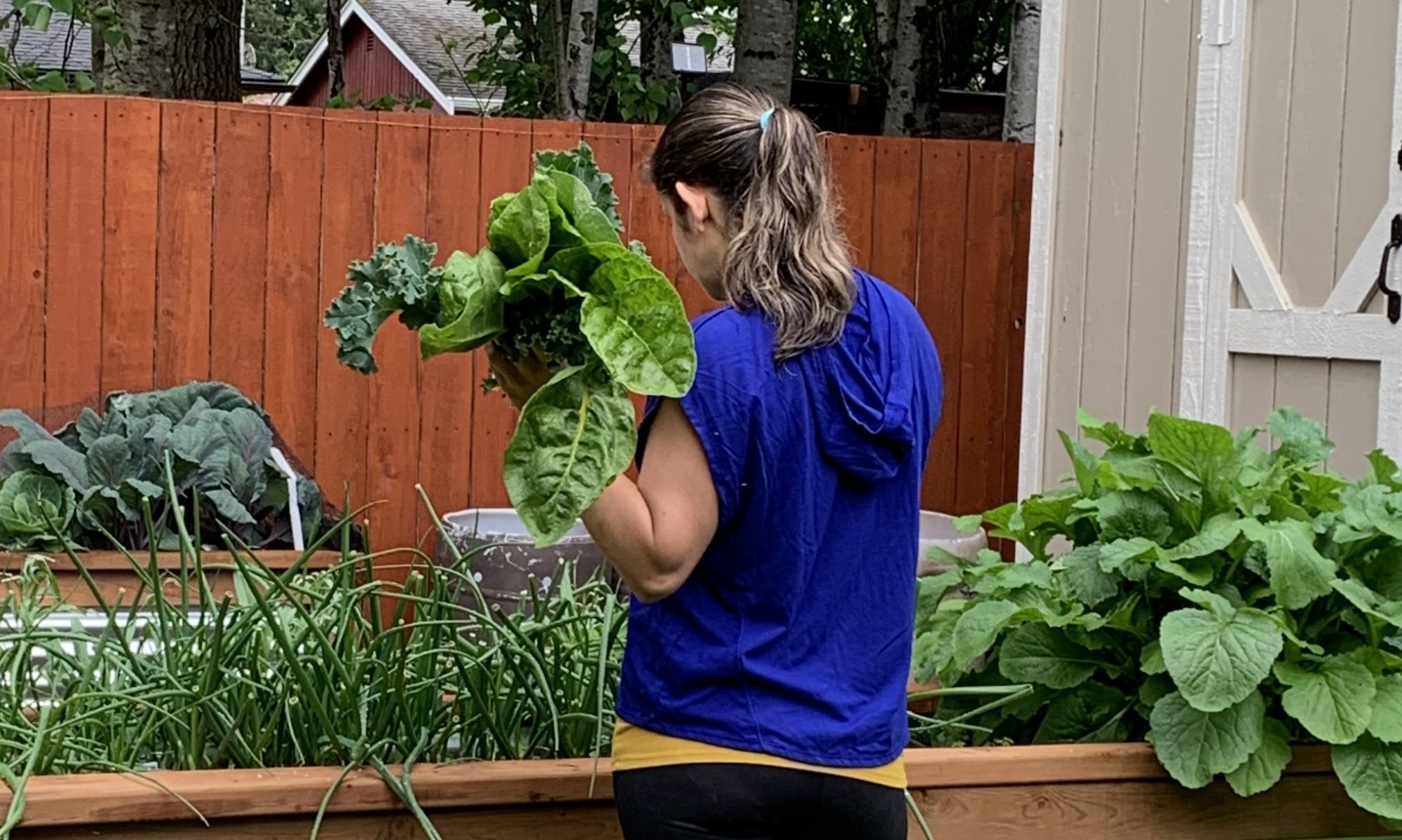

Thank you for this article. I think my issue has been that I wasn’t planting my garlic deep enough.